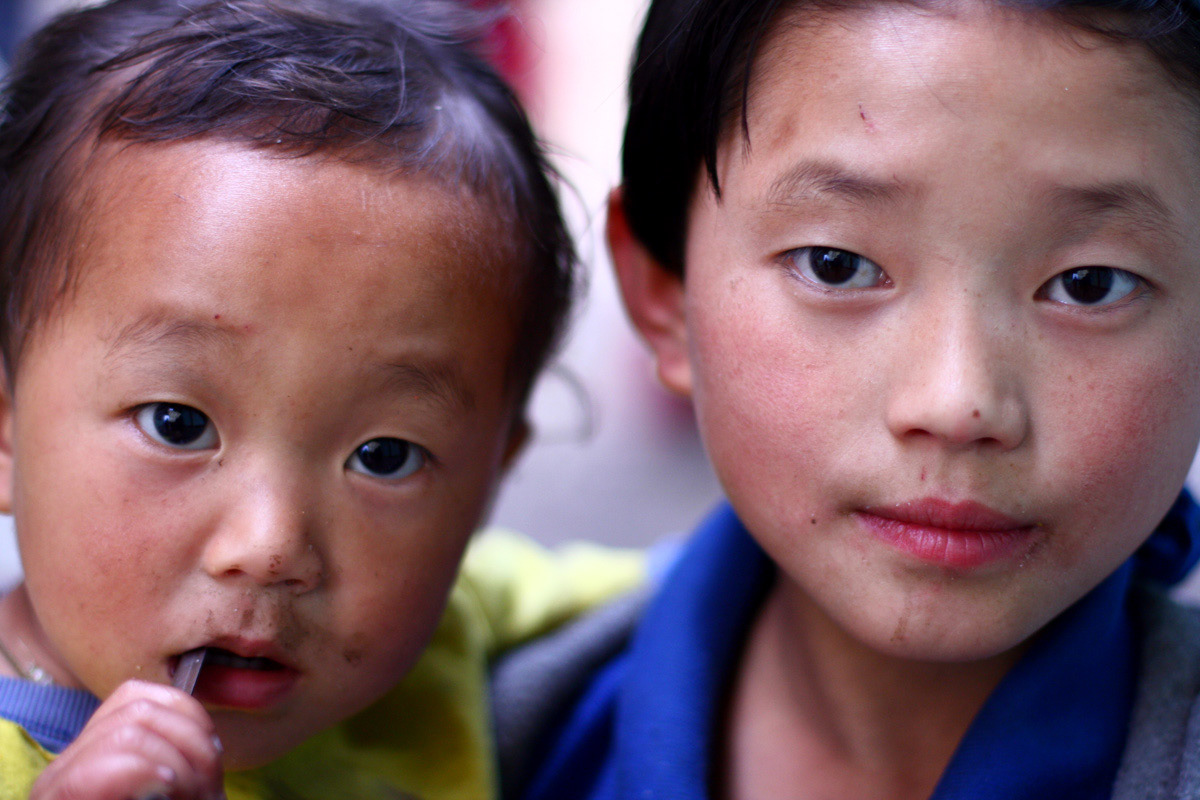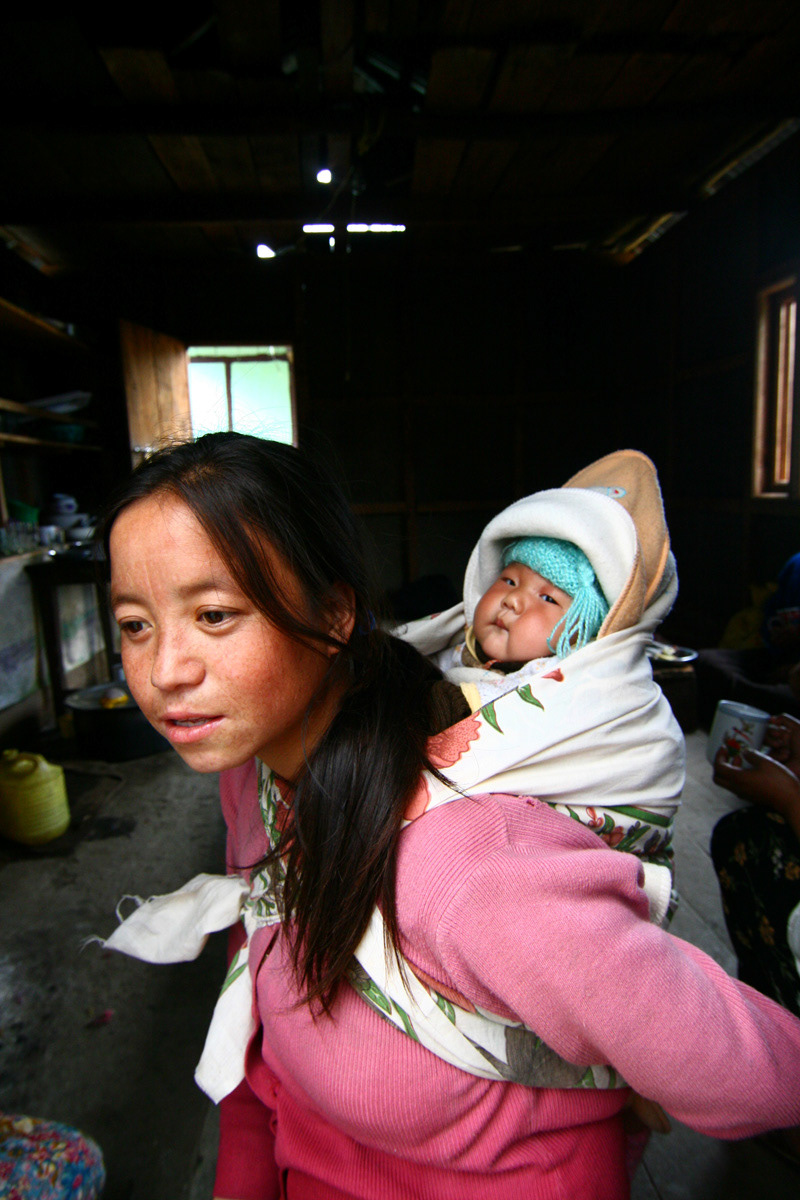The sacred lands in Upper Dzongu that could soon be devastated if infrastructure plans go ahead as planned. Likdem Lepcha is a monk who participated in the hunger strike. He also runs an orphanage for destitute and orphan boys in his small monastery
Each Lepcha village has a bóngthíng (usually male)or a mun (usually female, front and centre) - multi skilled shamans, who are healers, exorcists, nature guardians and are even responsible for guiding the dead to the afterlife.
On June 22, 2007, Dawa Lepcha (above) and Tenzing Lepcha (below, left) started a relay hunger strike to protest 27 large hydro electric projects that were destined to blight the ecology and spiritual home of their tribe and forever change the course of the river Teesta and her tributaries already threatened by receding glaciers. Dawa Lepcha is a prolific filmmaker and activist and one of the unofficial leaders of ACT (Affected Citizens of Teesta - actsikkim.com). In this photo, he wears the final badge of a hunger striker, the tube that is used by the government to force feed him to prevent death via starvation, which would be construed as suicide by the law. He and Tenzing sat for the longest time in the nearly 20000 hour hunger strike that included whole villages of Lepchas from the Dzongu region.


(Giri, Privat. ‘The Anti-dam Movement in Sikkim,’ Published by Sikkim University, 2014)



An ancient Lepcha shrine in the village of Panang is dedicated to the surrounding elements that give the Lepcha their livelihood